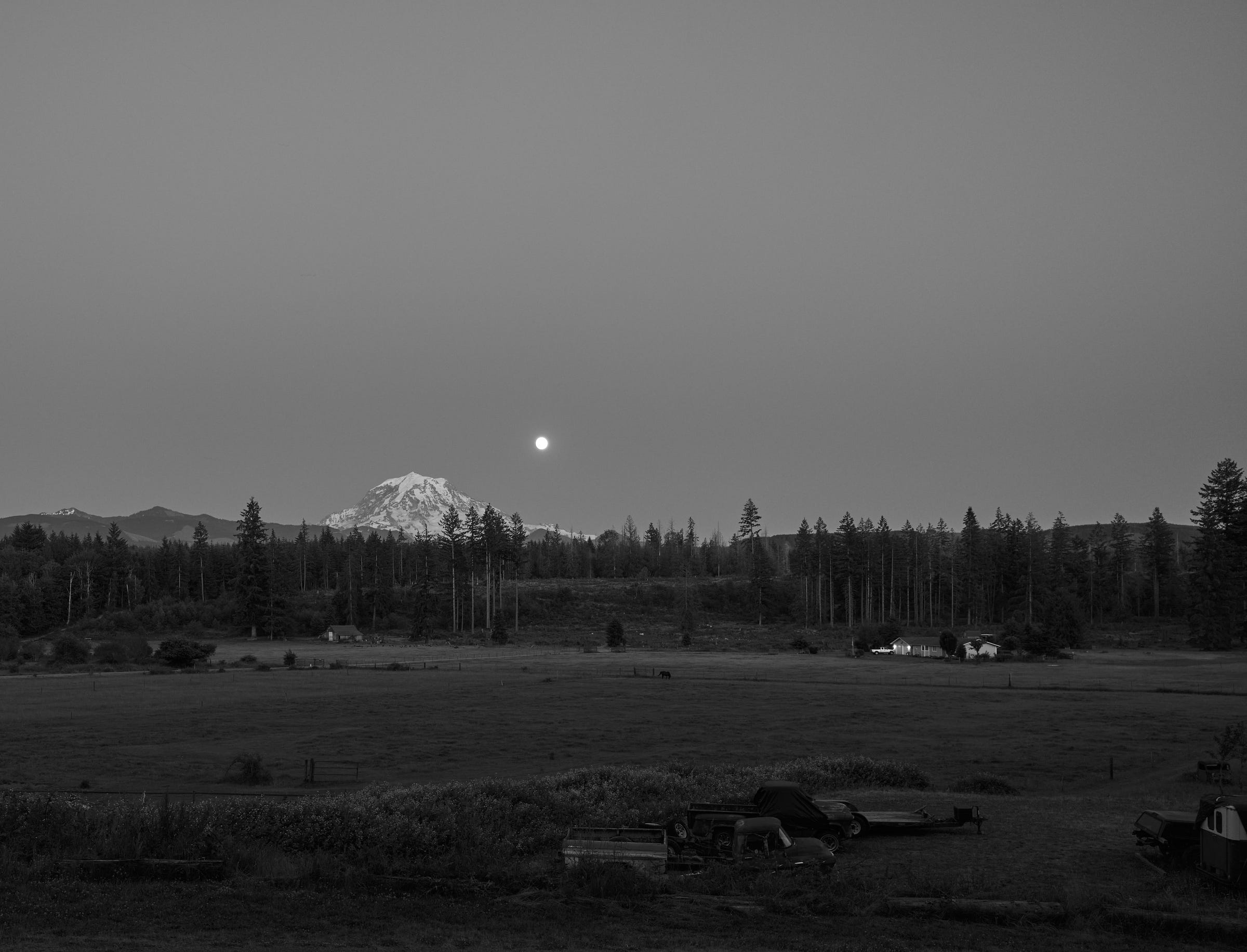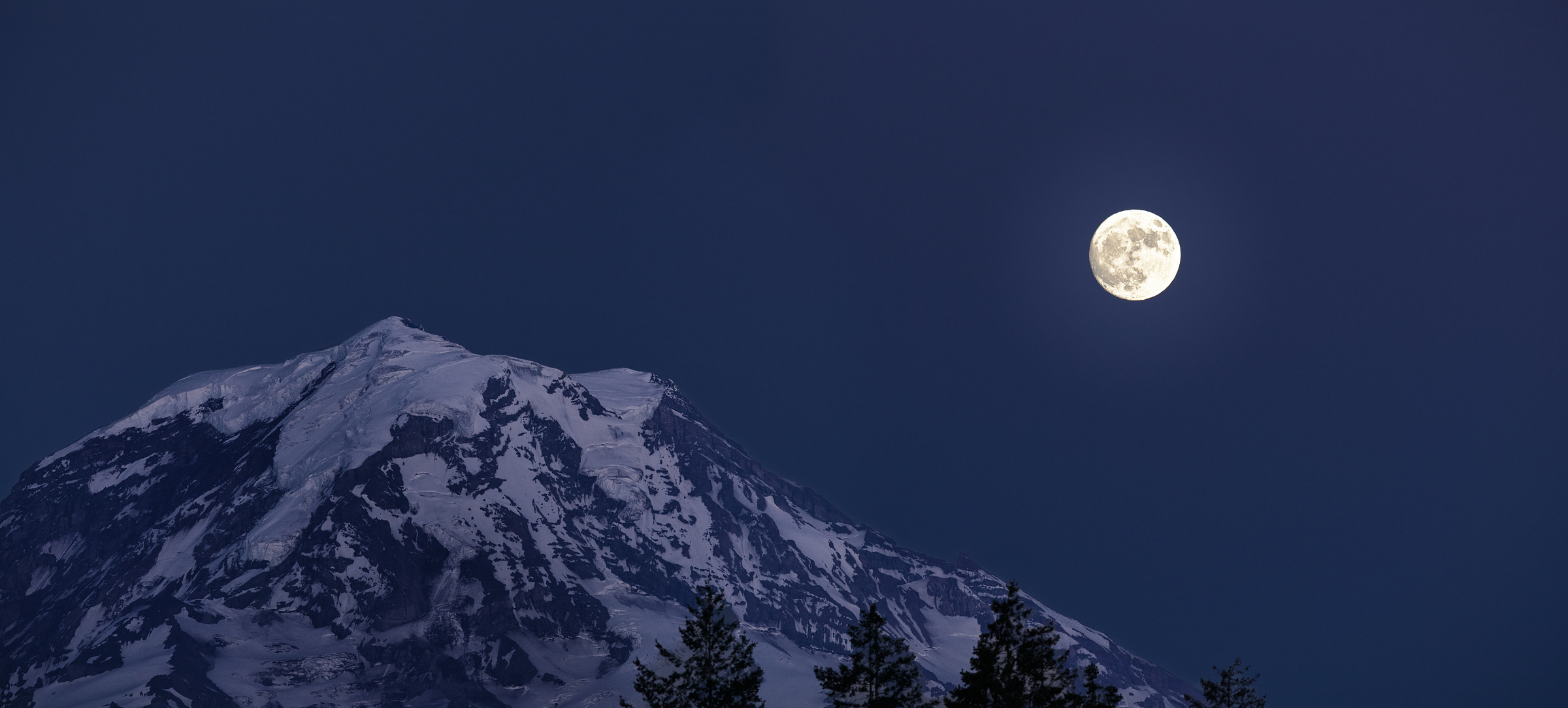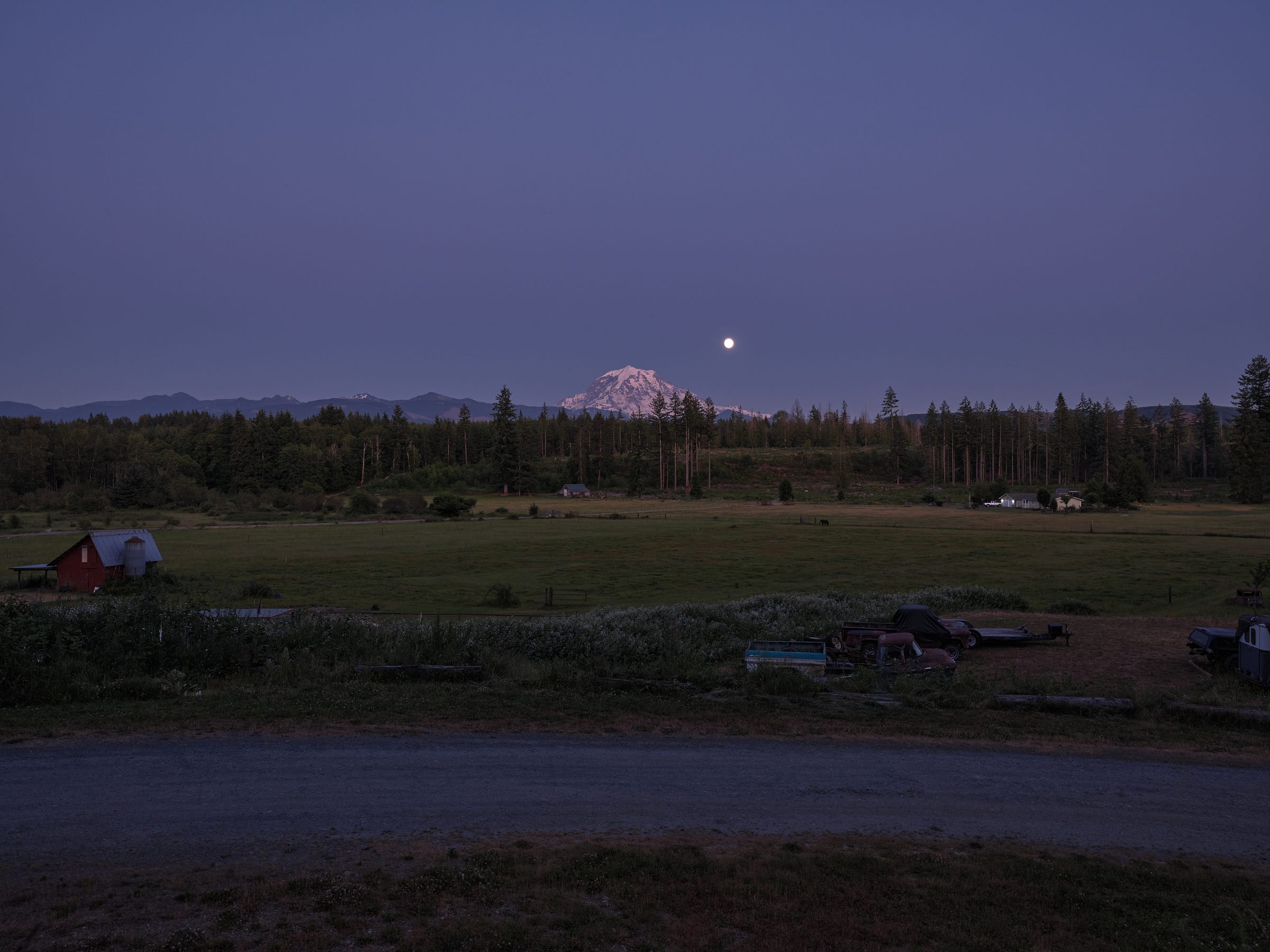Moonrise
Has me thinking of Moonrise, Hernandez, New Mexico by Ansel Adams
I knew that the nearly full moon would be rising near Mt. Rainier in June. That’s how it works new where I live; Mt. Rainier is in the Southeast, and after the spring equinox, the moonrise moves more and more southerly as the seasons evolve.
I took a few dozen photographs with my usual camera, the Fujifilm GFX 100S II. All but a few of the photos were taken with a 105mm Sigma f/1.4 lens, which is very sharp and technically capable. Blah blah blah: at long last, I’m starting to think about photographs more in terms of art and feeling, and letting the quality of the equipment help me achieve that.
As opposed to making sure everything is technically perfect.
With the 105mm, one gets very nice images, like this one. The sun had just set, the sky was all ‘purple majesty’, and the moon was about 3.5 degrees up, and just beginning to peek from behind the mountain. The air was as clear as it ever gets here. The scenery is a favorite: the farmhouse, the fields, sometimes cows or horses or ducks…
The next shot was one I wanted to get from a technical standpoint: the moon’s edge tight up against the mountain’s flank.
A ‘little’ (big!) marble ready to roll downhill, only to soar off to the right. As shown up close and personal with this panorama made from two shots with the Fuji 500mm lens:
The whole adventure was less than half an hour, but it was beautiful to watch a moon move around its planet. It can be difficult to wrap your head around how such things work, but it seemed easy under these circumstances. I’ve taken enough photographs over the years, and worked with this particular equipment enough, to be relaxed, not consumed with exposure calculations and other technical aspects. Just a smooth interaction between human and cosmos. I breathed out, and realized I had yet another lens: a very wide one, which was the opposite of what I usually want to use, had used for the entire process up to that point.
So I shot the scene with a 35mm medium format lens, showing everything in front of me at the time:
I saw the fields, the now much less imposing mountain, the dot of the moon, and road the old vehicles, remembered Adams New Mexico moon photo, and I knew what to do instinctively—that’s how I got to the photograph at the top of this page. What did I know? I was there, it was my job to find what I loved most about it, and take a picture of that. I cropped the photo to put the moon where I thought it belonged, to settle the image around a group of related elements, all the things you do when you search for a good composition. The starting photo was the fact; the cropped black and white is the creation.
And that’s how it often goes. You take pictures. You think, you feel, you gradually become informed about the scene, about yourself, about how the two relate to each other—your heart begins to see with its own eyes, your memory brings up ideas and feelings surge, and then, as quietly as a blink, you take the picture you love. It’s yours, even if famous people have been in similar circumstances, even if everyone knows the moon in their own way, even with the complexity of a modern camera in your hands.
A photograph is a composition like a song or a story is a composition: it is composed not just of what you see or hear, but of lives and experiences and all that goes on between birth and death. One more image, one more step, one more thought, one more understanding, one more love.
If you aren’t familiar with it, here a link to Mr. Adams’ lovely photo:






